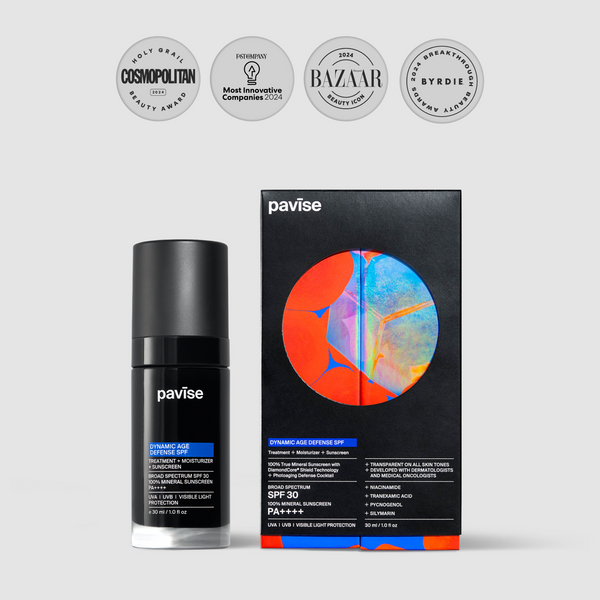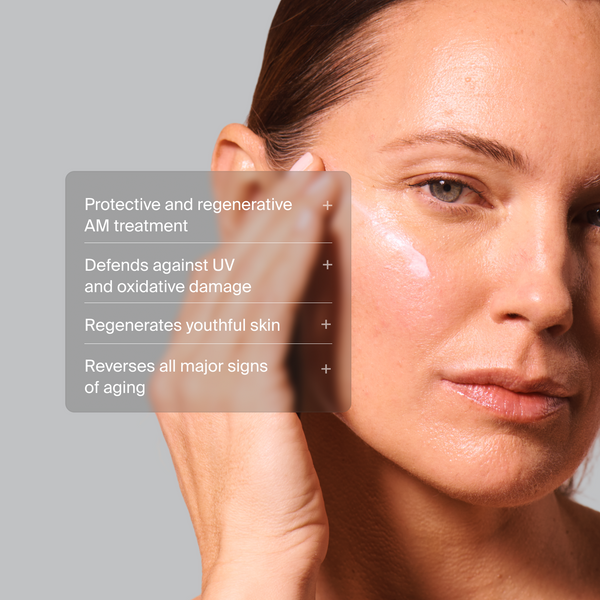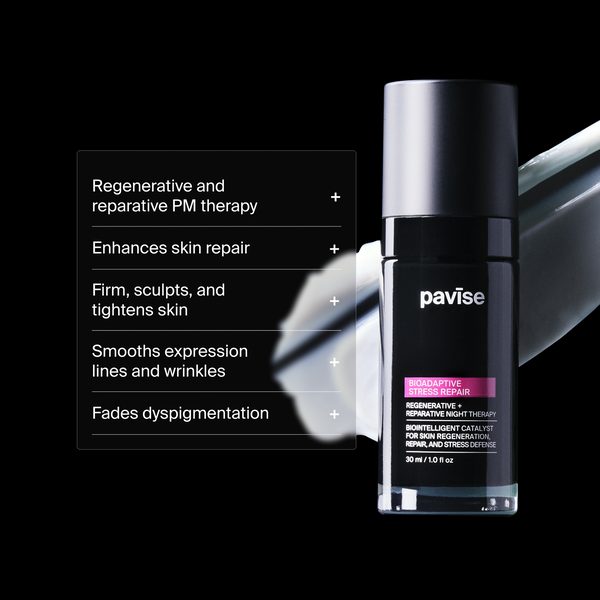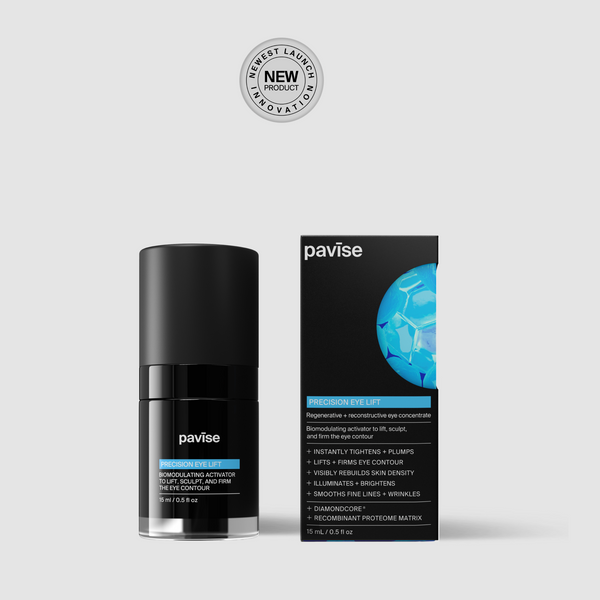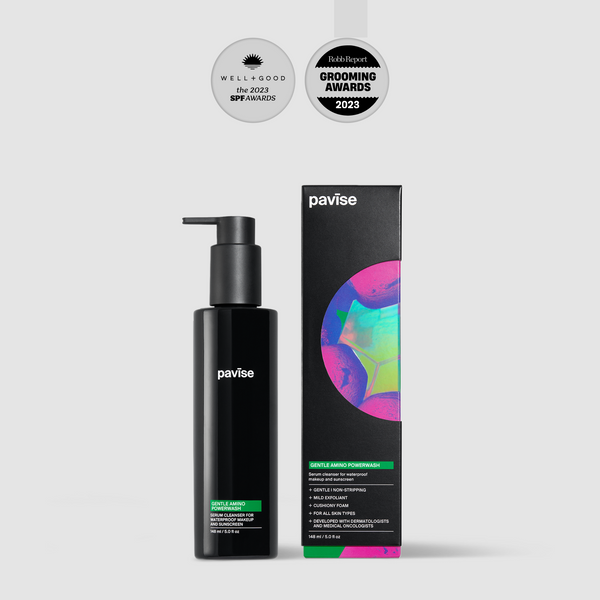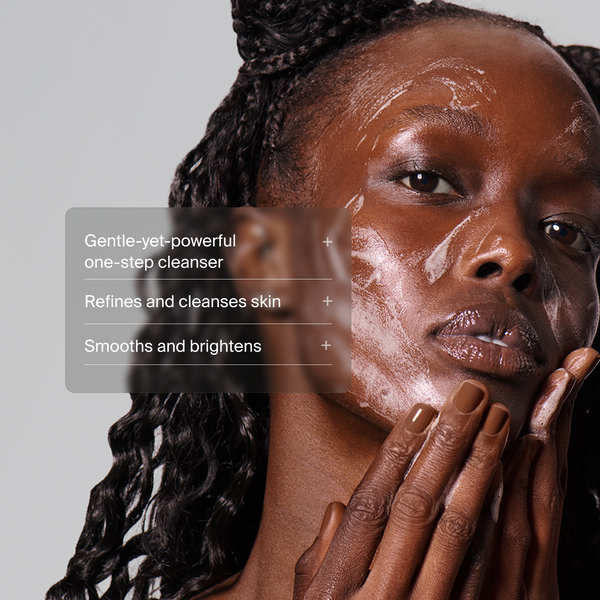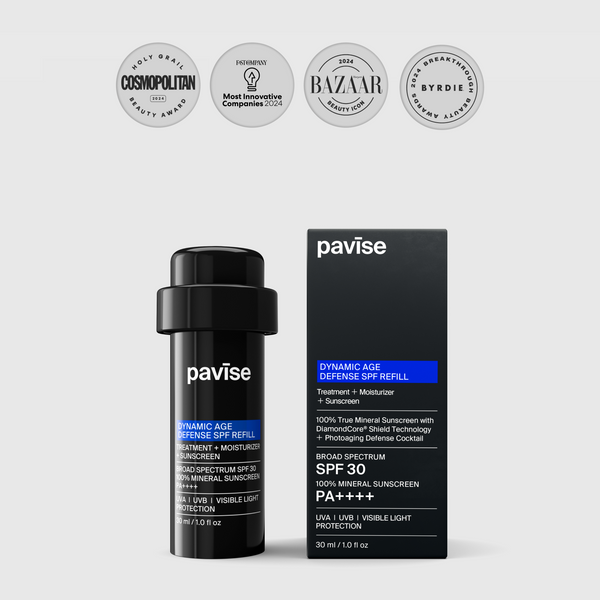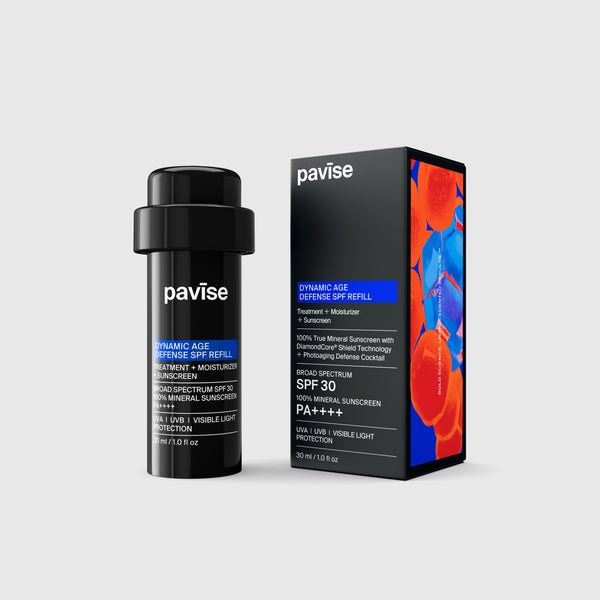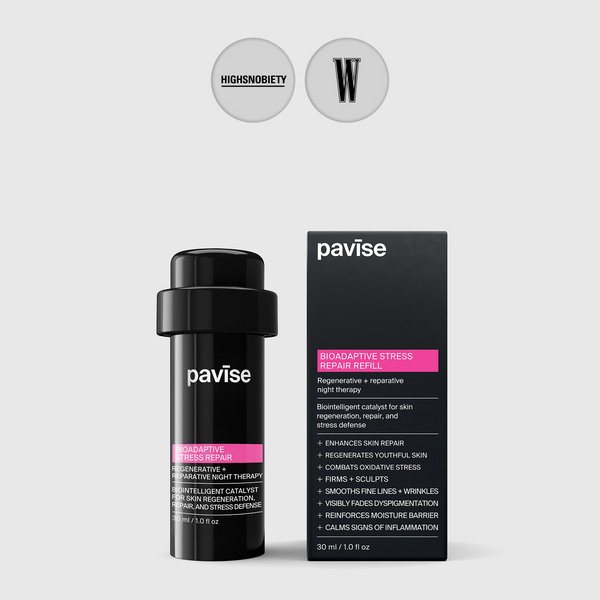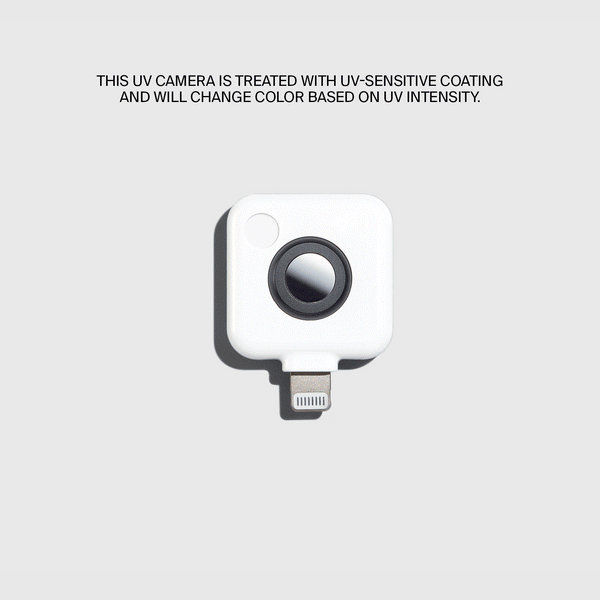Tranexamic acid
Tranexamic acid (TXA) is a synthetic derivative of the amino acid lysine that inhibits plasmin, an enzyme best known for its role in promoting blood flow. This explains why TXA was initially invented for use in pregnant women to help ease labor and prevent blood loss. Used topically, it’s a powerful hyperpigmentation treatment that fades discoloration, dark spots, and even melasma just as, if not more effectively, than hydroquinone. Its anti-plasmin abilities that allow it to improve pregnant women’s health outcomes are also what contribute to its hyperpigmentation-fighting qualities.
Melanin synthesis is also triggered by plasmin activity. TXA fades hyperpigmentation by preventing plasmin from binding to keratinocytes, a type of skin cell. Plasmin binding to keratinocytes ordinarily triggers the release of inflammatory molecules that promote hyperpigmentation, so by preventing the initiation of this chain reaction, TXA prevents hyperpigmentation as well. This means that TXA is particularly good at preventing post-inflammatory hyperpigmentation (PIH) and post-inflammatory erythema (PIE), or red spots and marks.
TXA’s inhibitory effect on plasmin also helps it to reverse the increase vasculature, or veiny nature of melasma.
Finally, TXA has been shown to accelerate skin barrier recovery by upregulating the production of occludin, a protein that is crucial to skin barrier function.
References:
-
Atefi, Najmolsadat. “Therapeutic Effects of Topical Tranexamic Acid in Comparison with Hydroquinone in Treatment of Women with Melasma.” National Institutes of Health, National Institutes of Health, 20 Sept. 2023, https://www.ncbi.nlm.nih.gov/pmc/articles/PMC5574746/.
-
Ebrahimi, Bahareh. “Topical Tranexamic Acid as a Promising Treatment for Melasma.” National Institutes of Health, National Institutes of Health, 20 Aug. 2023, https://www.ncbi.nlm.nih.gov/pmc/articles/PMC4235096/.
-
J, S. “Efficacy and Possible Mechanisms of Topical Tranexamic Acid in Melasma - PubMed.” National Institutes of Health, National Institutes of Health, 2 May 2016, https://pubmed.ncbi.nlm.nih.gov/27135282/.
-
Yuan, Chao. “Tranexamic Acid Accelerates Skin Barrier Recovery and Upregulates Occludin in Damaged Skin - PubMed.” National Institutes of Health, National Institutes of Health, 22 Aug. 2013, https://pubmed.ncbi.nlm.nih.gov/23967870/.

